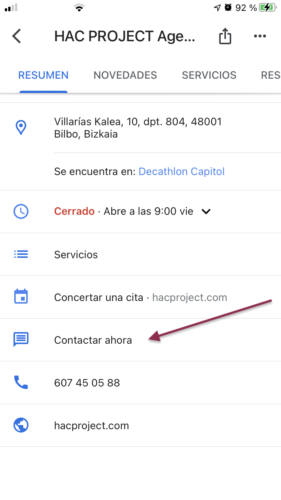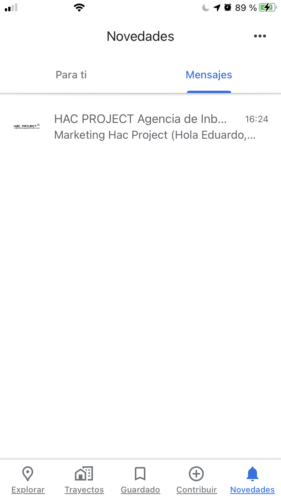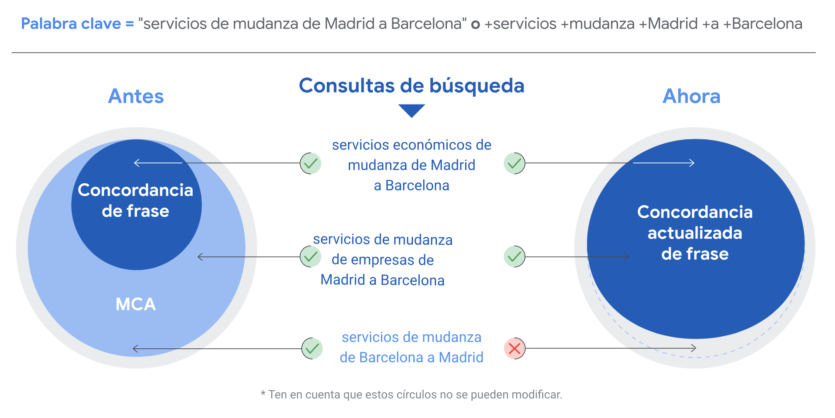En este artículo

Hello SEO Pros!!
We’re back with a vengeance after a break from NotiSEO. As always, we consult official sources when compiling the news. Let’s get to it!
Sources:
- Search Engine Round Table: Barry Schwartz (rustybrick)
- Official Google Webmaster Central Blog [EN]
- Cyrus (@CyrusShepard)
- Google SearchLiaison (@searchliaison)
- Campamento Web
- Google Search Central
- Newsletter SEOpatía
| Date | Source | News |
| Feb 5, 2021 | SE Round Table | Google About This Result, Enforcing Cart Prices & Google Discover Chrome Data & Match Types Expand |
| Feb 12, 2021 | SE Round Table | Google Passage Ranking Live, Search & Image Algo Updates, News/Discover Manual Actions & Dark Theme |
| Feb 19, 2021 | SE Round Table | Google Passage Based Ranking Impact, Google Update, Responsive Search Ads & Google Maps Spam |
| Feb 22, 2021 | Campamento Web | 😱 GOOGLE’S LATEST BIG CHANGE!!! 📰 SEO News – CW #107 |
| Feb 26, 2021 | SE Round Table | Google Ranking Update, Page Experience Update, Mobile First Indexing Dead & Partner Program Change |
Google My Business: Coworking Spaces
Google has added a line to its Google My Business guidelines regarding co-working spaces.
This was added to these guidelines: https://support.google.com/business/answer/3038177?hl=es
As you can see, Google specifically has three rules for coworking spaces to be eligible for a Google My Business listing:
- Clear and visible signage of the business name.
- The business must be able to accept customers at that location during business hours.
- The business must be staffed during business hours.
Google My Business: Messaging on Desktop
Until now, direct messages sent through the My Business listing could only be managed from the My Business App on a mobile phone.
Google has implemented the ability to respond to Google My Business messages through the desktop browser.
On the user side, when communicating via the “Contact now” button on the My Business listing, messages can be managed from a new “Messages” section.
From Google Maps, it is also available in “Updates / Messages”
More information: Read and reply to messages – Google My Business Help
Google Ads: Lead form extension
Google has just updated lead forms to be triggered when the ad headline is tapped or clicked, instead of a sublink or extension link.
Instead of going to the landing page, it will display the form configured through such an ad extension.
Just announced! You can now show a lead form when people tap the headline of your Search ad. Learn more → https://t.co/j3xsSSJ22F pic.twitter.com/3Boh9UdVBR
— Google Ads (@GoogleAds) February 10, 2021
To enable this option, go to the campaign settings and select the option “Always show the lead form when someone interacts with my ad.” After a lead submits a lead form, they can choose to either visit your website or return to the search results page.
This is how this type of ad looked until now:
This is how it looks now:
More information: https://support.google.com/google-ads/answer/9423234?hl=es
Google Ads: Expansion of Phrase Match
Google is making some changes to its match types, specifically phrase match will be expanded to cover the additional traffic that broad match modifier normally generates. However, Google said this will still “respect word order when it is important to the meaning.” This change will begin to roll out over the next two weeks.
Google explained that “with these improvements, you can reach the searches you want using phrase match, without worrying about the searches you don’t want.”
More information: https://support.google.com/google-ads/answer/10346549?visit_id=637502945435547749-1929420085&rd=1&hl=en
Google Ads: Google Tax
As expected, Google is passing on to the end user the surcharges derived from the new Digital Services Tax. The famous “Google Tax”.
A 2% charge will be included on invoices for ads served in Spain and France.
More information: https://support.google.com/google-ads/answer/9750227
Diversity in Google Images
Google announced that in November 2020 it launched an update to the Google Image search algorithm with the aim of reducing duplicate images in search results, to instead show “relevant but visually distinct” images. In addition, Google made the refinement boxes for alternative meanings more useful with better images.
There are also times when a query can relate to different things. For example, [jaguar] could mean either the animal or the car. Sometimes, one meaning can dominate image results. Our improvement works to show images for alternative meanings, when that seems helpful…. pic.twitter.com/YvAikMnJq2
— Google SearchLiaison (@searchliaison) February 11, 2021
“Sometimes, one meaning can dominate image results. Our improvement serves to show images of alternative meanings, when that seems useful.” Google “there are also times when a query can relate to different things. For example, [jaguar] could mean both the animal and the car.”
I think this update is a clear warning that we should avoid stock images. Try to have images that are as original as possible.
SEO Library: Tips for image optimization
As part of the Search Central Lightning Talks series, John Mueller published a video on best practices and tips for image SEO. It is one of the most detailed image SEO presentations I have seen from Google. It lists 12 specific practical tips and then talks more about implementation and measurement.
Here is the video, but I will summarize some tips below:
- Provide context: Make sure the images are relevant to the page and that the titles, headings, and content are also relevant to the image.
- Optimize image placement: They should be placed near relevant text and provide captions near the image. Place the most important images at the top.
- Do not add text in the image, place that text on the page.
- Use alt attributes on your images.
- Use high-quality images.
- Use a good descriptive URL; Google uses both the URL path and the image file name to understand it. Avoid changing the URL and if you do change it, do a 301 from the old URL to the new one.
- Provide structured data relevant to your page.
- Use large image previews using max-image-preview-large.
- Add image license marks.
- Implement lazy loading for images.
As an extra tip. John Mueller was later asked about image EXIF data. It’s a topic Matt Cutts talked about several years ago but didn’t give a direct answer. John Mueller said on Twitter this morning that Google EXIF data does not affect ranking in Google search. He said “we used to show some of the EXIF metadata in the Google Images preview panel, but I don’t think we do that anymore. It is not used for ranking.”
SEO Library: Learning SEO
Aleyda Solís, an expert in International SEO, has launched one of the best compilations of learning material and reading, for those who want to start, deepen or specialize in Search Engine Optimization.
Through this very well-structured diagram, she explains each step:
Each of the guides is available on the web and in a Google spreadsheet to mark the topics we are mastering:
Basic SEO Level
- Introduction to SEO
- Keyword Research
- Content Optimization
- Technical Optimization
- Link Building
Deepening SEO Knowledge
- Javascript for SEO
- Internal Linking
- Web Speed Optimization (WPO)
- Mobile Optimization
- Structured Data
- E-A-T
- Image Optimization for SEO
- Video Optimization for SEO
- SEO for Web Migrations
Executing an SEO Process
- SEO Audits
- Establishing an SEO strategy
- Defining SEO objectives
- Monitoring and Reporting for SEO
- Managing the SEO process
Specialization
- International SEO
- SEO for News
- SEO for e-Commerce
- SEO for SaaS Tools
- SEO for the Travel sector
- Local SEO
SEO Automation
- Python for SEO
- BigQuery and SQL for SEO
- RegEx for SEO
- App Scripts for SEO
Keeping up with SEO
- Official Publications from Search Engines
- Search News
- SEO News Aggregators
- SEO Podcasts
- SEO Newsletters
- Online Events
Free SEO Tools
- Keyword Research Tools
- On-Page SEO Tools
- Link Building Tools
- Search Monitoring and Position Tracking Tools
- Dashboards and Reporting for SEO
- Speed Optimization Tools
- Structured Data
- Mobile SEO Tools
- Local SEO Tools
- International SEO Tools
SEO Library: Stop Words: To use them or not?
A few weeks ago, a debate arose from a post on the SEMrush Blog “SEO stop words”.
John Mueller responded by saying on Twitter “I wouldn’t worry about stop words at all; write naturally.”
https://twitter.com/JohnMu/status/1358165707784077312
In computer science, stop words are words that are filtered out before or after processing natural language data. They are usually prepositions, articles, conjunctions, or pronouns, but Google and other search engines are much smarter today about stop words.
In fact, I doubt they even filter them out; they probably use them to better understand the meaning of the sentence. We have heard Google talk about this with RankBrain, BERT, and other natural language processing techniques over the years.
In 2008, Google itself stopped showing stop word notifications in search results, where Google would tell the searcher that it was ignoring certain stop words because perhaps Google was no longer ignoring them as part of the query.
Stop Words in Google 2008
In conclusion, should we remove stop words from URLs and page titles? Maybe yes, if it doesn’t affect the concept or semantics of the text, but in the content of the article, they should not be removed.
Search Central Live
On February 20th, the first Search Central Live event was broadcast live, the first of many live events with the company’s Top Guns, such as Danny Sullivan, Martin Splitt, Gary Illyes, John Mueller, among others.
We will be able to attend and interact with the attendees or watch it later on demand on the Google Search Central YouTube channel.
Here is one of the live sessions, dedicated to solving technical SEO problems, among other topics:
More information: https://developers.google.com/search/blog/2021/02/join-us-at-search-central-live?hl=en
Google Passage Ranking Live
In this update, announced since last October 2019, what Google is trying to achieve is to rank by passages, that is, by specific segments, headings, or fragments of the entire content of a page.
It is the way Google algorithmically examines a long piece of content and is able to understand that a specific passage or set of passages refer to query X, while another passage or set of specific passages from that same document may refer to query Y.
Google is able to rank the same piece of content but different passages within that content separately and for different queries. Google does not index them separately, but ranks them separately.
Last week, we shared about how we will soon identify individual passages of a web page to better understand how relevant a page is to a search. This will be a global change improving 7% of queries:https://t.co/iQoXktmSkt
In this thread, more about how it works…. pic.twitter.com/2oqdoCkt6r
— Google SearchLiaison (@searchliaison) October 20, 2020
This should be a big update, Google said it would affect 7% of search queries when it was first announced in October, as seen in the Tweet.
Right now it is only in the United States/English, and it will be implemented in the rest of the countries and languages.
However, no significant fluctuations have been reported since its launch by position tracking tools. The volatility has rather been scarce.
More information on the Google Search Blog
What can we do? What will be the consequence of this?
- This update is something that could be foreseen, after having launched the “scroll-to-text” feature of Google, where for certain queries, the text in question is framed in yellow.
- The structure becomes very relevant: h2, h3 sections. Headings.
- Use related terms and semantically close concepts.
- Manual research in the SERPs is more important than ever.
- “Megaposts” will become fashionable again. +4k words.
- Content is King Context is King 😅
What’s New in the SERPs: About This Snippet
Google has launched a feature for its search result snippets that shows more information about a result.
It is a feature where you click on the three dots on the right and Google shows you more information “about this result.” The possible information to display is:
- Reference about the site from Wikipedia, if available.
- If the site is secure (HTTPS)
- If it is an organic or paid listing.
Literally, the post says: “when available, you’ll see a description of the website from Wikipedia, which provides free, reliable information about tens of millions of sites on the web. Based on Wikipedia’s open editing model, which relies on thousands of volunteers around the world to add content, these descriptions will provide the most up-to-date, verified, and sourced information available on Wikipedia about the site.”
Google Search is now rolling out a special icon that provides more information about the source of a result, if your connection to it will be secure, and more. This is a beta feature for now, offered in English in the US. https://t.co/9Vovj6vYcG pic.twitter.com/vL3FZOTvQg
— Google SearchLiaison (@searchliaison) February 1, 2021
“If it’s a site you haven’t heard of before, that additional information can give you context or peace of mind, especially if you’re looking for something important, like health or financial information.”
If a specific website does not have a Wikipedia description, Google will show the searcher additional context that may be available, such as the date Google first indexed the site.
This has generated controversy because some entries in Wikipedia are not entirely up-to-date, or are not entirely truthful. Some webmasters claim that they should be the ones to generate that information, since they have control over the website (through Search Console).
We already saw Google testing this in 2019 and 2020 and has decided to launch it in BETA mode for now.
What’s New in the SERPs: Ideas for Product Styles
Some SEOs on Twitter comment that they have detected this new functionality that is activated in product searches.
The section, called Popular Products, if you click on one, now allows you to swipe left or right to explore the different products. There is also a new “style ideas” section that was first launched as a Google Lens / Images product in 2017.
Google is testing or has launched a new way to browse through popular products. Is everyone seeing this functionality? pic.twitter.com/JQUartmhMI
— Brian Freiesleben v2 (@type_SEO) February 14, 2021
What conclusion should we draw? Well, for those who do SEO for e-Commerce, it is even more necessary to specify the characteristics of product variations more and more, upload a gallery of the products being used (for example, models wearing that clothing).
That’s it for the March 2021 NotiSEO. I hope it has been entertaining and that it sparks your interest in doing things in SEO.
A hug!











